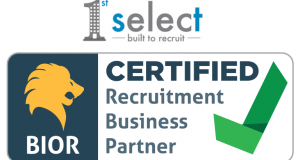 Soft benefits are increasingly playing a more prominent role in keeping employees happy
Soft benefits are increasingly playing a more prominent role in keeping employees happyWaiting around for the perfect job or opportunity to show up in your target market is perhaps not the cleverest career tactic. Being active in seeking out your perfect role by searching out the correct people to approach within your target organisations and then go for it, write emails, follow up with phone calls and try to secure meetings with these people. Don’t just drift around hoping that recruiters and head-hunters will find you by chance, be proactive and search them out first. This way, you will more likely get what you want and get is faster.
At the end of the day the job search is a numbers game; many things will not come into fruition through no fault of your own. Just make it a priority to get in front of the right people, LinkedIn is a fantastic network to search them out and to connect and engage via InMail.
At the Five O’clock Club, where Robert Hellmann co-leads the Club’s career coach certification program, they use a numerical benchmark for this kind of outreach. The approach they use is that of aiming for having six-to-ten “things” (i.e. meetings) in the works with potential hirers or those in their networks, via emails and phone-call follow-ups, whether there is an opportunity available now or not. You can keep in touch for something in the future, or they might refer you to someone else.
Robert speaks of his own job hunting experience when he was looking to meet senior people in higher education to facilitate a transition out of financial services. He crafted well-worded emails and sent them to top administrators at universities in which he was interested. In the emails he included the following elements, in roughly this order:
- How he found them (e.g. saw them quoted in a publication, found their bio on the organization’s website, saw mutual LinkedIn connections, etc.).
- Why he was reaching out, e.g. for a 20-minute conversation (everyone has 20 minutes somewhere on their calendar).
- A specific mention that he was not expecting an opening now (took the pressure off since there was probably nothing available at that moment).
- How the meeting would be mutually beneficial; he offered to share insights that could benefit them, as well as make his network available to them.
- His pitch, e.g. background, tailored specifically to their likely needs, which included bulleted accomplishments.
- In some cases, a specific personal or organizational reference. He didn’t just say “your school is great,” that sounds insincere. He was far more specific, e.g. “I read about…”
- Call to action, e.g. “Do you have 20 minutes available to meeting over the next two weeks?”
Throughout the email, he used language that could tie his email to their needs, e.g. “this experience could help you…” He notes that he did not attach a resume, as that would signal “please hire me” and his number one goal was to just get in front of them even if there was no opening.
In some cases, he did have to follow up with a phone call, in others they just responded on their own almost immediately. The result was that he got ALL of the meetings he asked for, more than a dozen at different universities. The outcome was highly positive, resulting indirectly in many opportunities for interviews and offers.
This approach, just getting in front of hiring managers whether or not there’s an opening, is a proven success story. Relationships with strangers are built this way and then, crucially, keep in touch to access the market for “hidden” job or consulting opportunities.
Yes, an active approach means more work up front, but the return on this time investment is huge and well worth it. This active approach becomes essential when you are not the perfect candidate; for example, if on-paper you appear over or under-qualified, have gaps in your experience, are changing industries and so forth, you will face nearly impossible odds using the ads/recruiters route. Being proactive is most definitely the way to go.
Join Over 40,000 Recruiters. Get our latest articles weekly, all FREE – SEND ME ARTICLES
Recruiters love this COMPLETE set of Accredited Recruitment & HR Training – View Training Brochure








